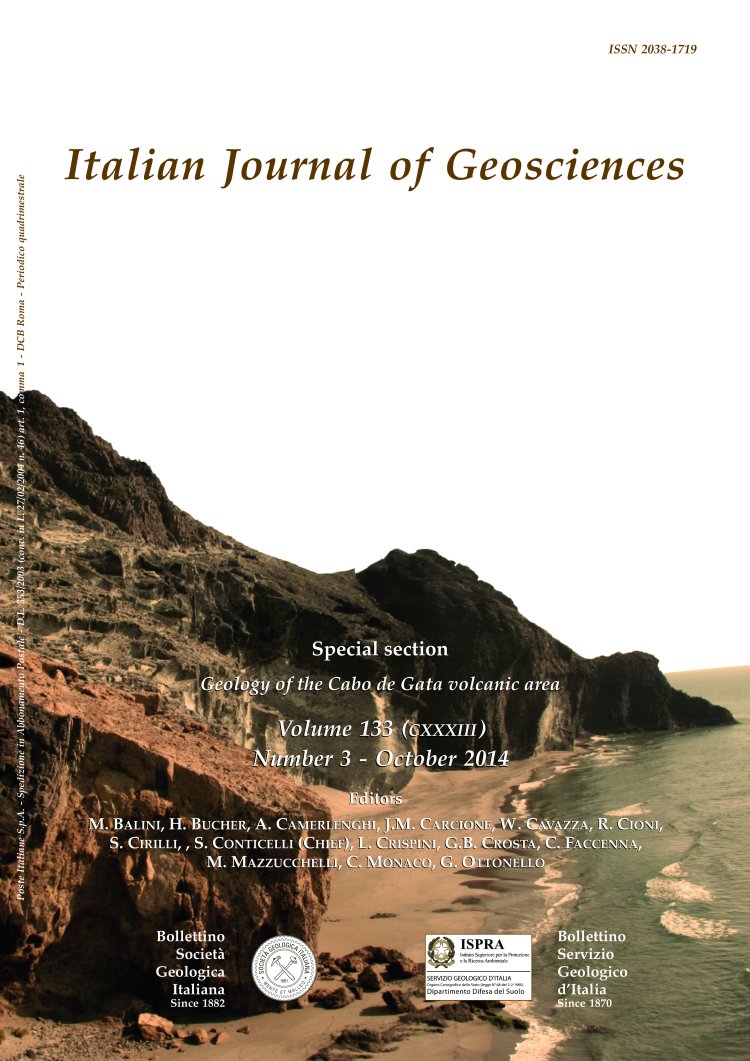
Mid-Eocene mass-wasting mélanges in the context of wrench faulting along the oblique-convergent Corsica-Sardinia margin
Francesco Massari (*) & Iginio Dieni (*)
(*) Dipartimento di Geoscienze, Università degli Studi di Padova, Via Gradenigo, 6 - 35131 Padova. Corresponding author: francesco.massari@unipd.it
Volume: 133 (2014) f.3
Pages: 381-395
Abstract
The Mid-Eocene clastic wedge with olistoliths of the Caporalino
Unit and correlated units in Corsica are regarded as sedimentary
mélanges emplaced at shallow structural level by means of submarine,
gravity-driven mass wasting processes in fault-bounded basins
of the Corsican accretionary wedge. This occurred in the frame of
synorogenic sinistral strike-slip motion generated by oblique convergence
between the Iberia and Adria plates. During the final, Late
Eocene collisional stage the mélanges were overprinted and structurally
reworked as olistostromal carpets at the base of the uppermost
thrust sheets of the nappe stack (the Balagne-Nebbio Nappe).
It is believed that the Corsica orogenic belt continued southwards,
and that the present-day Sardinia behaved as foreland of the Alpine
belt, as suggested by evidence of forebulge migration from Late Cretaceous
onwards. However, the NE and SE sectors of Sardinia show
different responses to the Mid-Eocene geodynamic event, as the
related wrench faulting and transpressional deformation are well
developed only in the NE part, the change being identifiable at the
level of the Gulf of Orosei. We propose that the Orosei Canyon Line
(OCL), an important lineament identified by SARTORI et alii (2001),
could have been active in Eocene times as a transform boundary
preventing the southward prosecution of the Alpine subduction. The
transpressional response of NE sector of Sardinia to the stress field
was accompanied by accumulation of elongate clastic wedges by
mass-wasting processes at the base of tectonic scarps. The wedges
display several features comparable to those of Corsican mélanges,
and, although obviously generated in different geologic contexts,
both are considered to be the expression of a peculiar Mid-Eocene
geodynamic event of the Alpine orogenic belt.
Keywords
Corsica, Sardinia, major Mid-Eocene geodynamic episode, sedimentary mélanges, transpression, synorogenic
exhumation.
Get Full Text